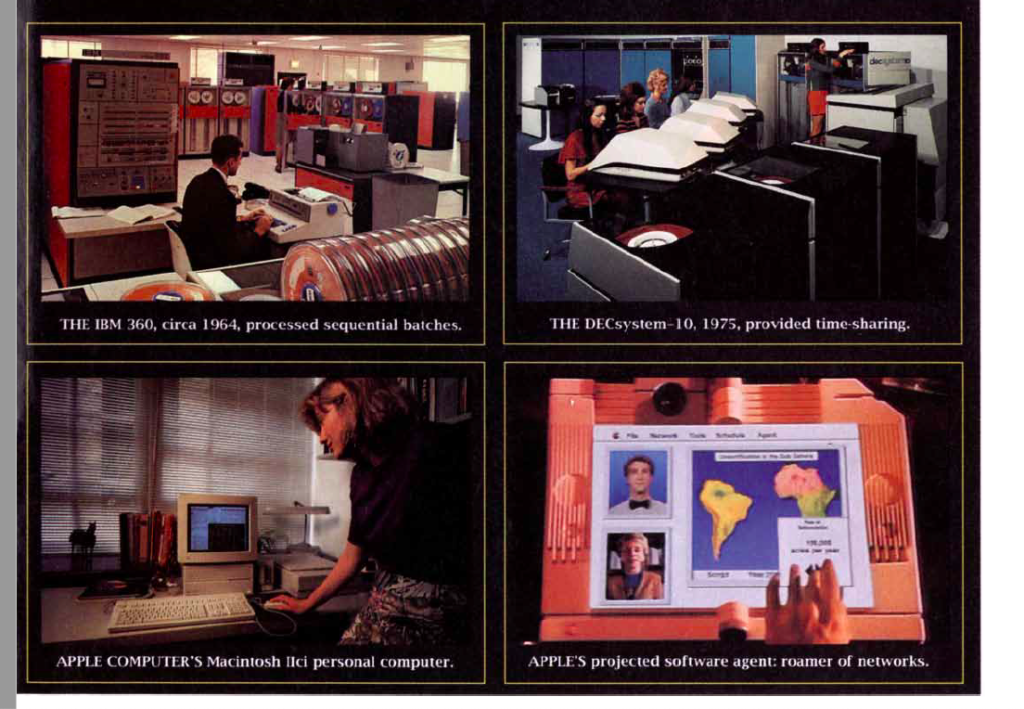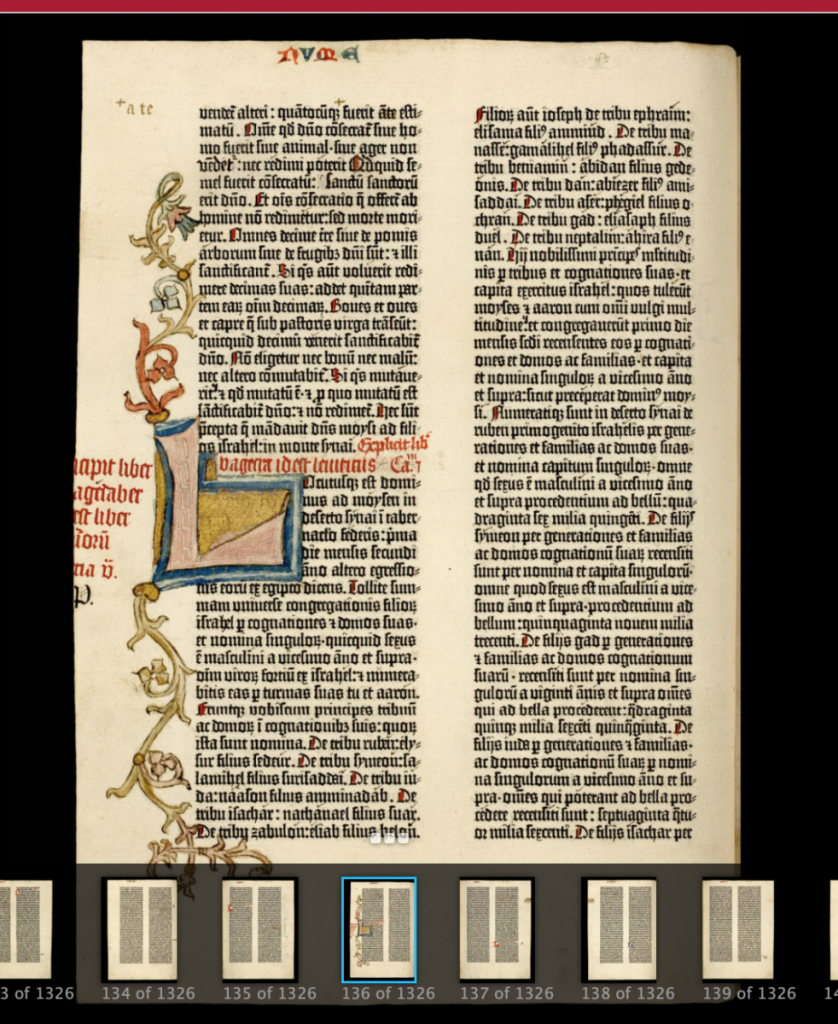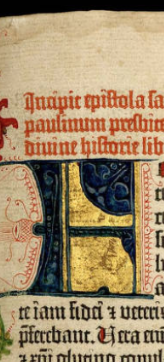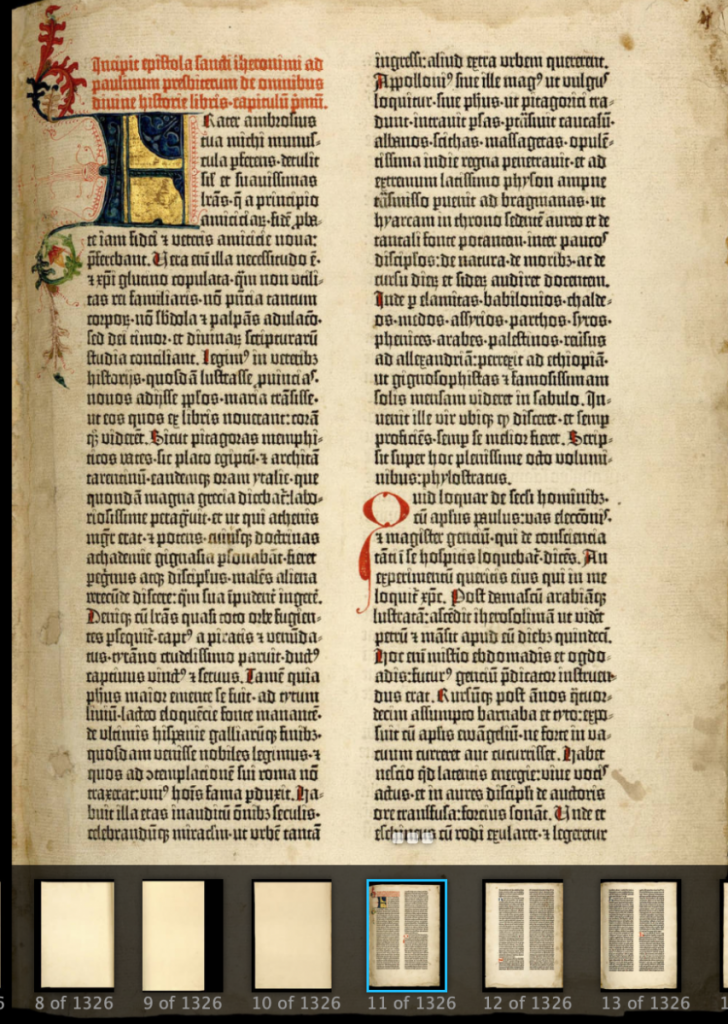Contents
Class Info
- Date: 09/13/2021
- Meeting Info: via zoom at link here
To-Do Before Class
Before class, do all readings and homework assignments assigned on Week One
Topic
Analog vs. Digital; A Brief History of Design Technology
Objectives
- Basics of the Operating System
- Evolution of the Printed Book and how the invention of that technology, the printing press, altered society in the Medieval Western World
- Evolution of the internet and its impact on 20th and 21st centuries
- The switch from Analog to digital mediums in the design field
• Review Epub, PDF html books vs. printed book for comparative purposes with regard to visual formats and structure. Textbook for this class will be used as a point of comparison

Discussion/Lecture
Let’s begin class by taking a look at the Book that is recognized as the first printed book in the Western World: The Gutenberg Bible. There are only 20 complete copies of the Gutenberg in the world today. One of them was scanned and it is digitally available at the University of Texas Ramsom Center.
Below are some lecture slides that take us from Gutenberg to Google:
https://www.hrc.utexas.edu/press/releases/2003/digital-gutenberg.html
https://sites.utexas.edu/ransomcentermagazine/2016/07/12/gutenberg-bible-page-turning-biblia-latina/
Please take about 20 minutes to turn the pages of the world Famous Gutenberg Bible.
Questions for Discussion: What did you notice about the pages I showed you of the Gutenberg bible? Are there visual elements you recognize in today’s design? Then, quickly list those similarities. And then list differences you notice in the bible’s pages that you don’t recognize or understand.
Go to our discussion board and write your thoughts on viewing the bible and answer the questions above.
This semester we will be using WordPress, the underlying structure for OpenLab. In it, you will encounter the Advanced Gutenberg settings, named for Gutenberg.
Lab Work
We will do research using the Library’s Databases to find the article below and do work on your logo history reports.
Today, we will be reviewing Pentagram Typographic Conundrums (riddles) at https://www.pentagram.com/news/conundrums and http://jaced.com/2009/12/04/for-the-love-of-nonsense/. In these riddles, Pentagram just uses type, lines, and color to create effective references to well-known phrases. See how many of these well-known sayings you can guess. These are an extreme form of visually enhanced quotes and they can inspire you in your own work, as can looking through the rest of Pentagram’s site as Pentagram is one of the leading design companies in the world.
After reviewing as many as you can in 15 minutes, pick your favorites and write a brief post on our discussion board describing how the designer manipulated the type and layout to get the message across.
Let’s discuss five principles of design I’d like you to keep in mind when designed your postcard concepts:
•Contrast
• Alignment
• Proximity
• Repetition








Recent Comments